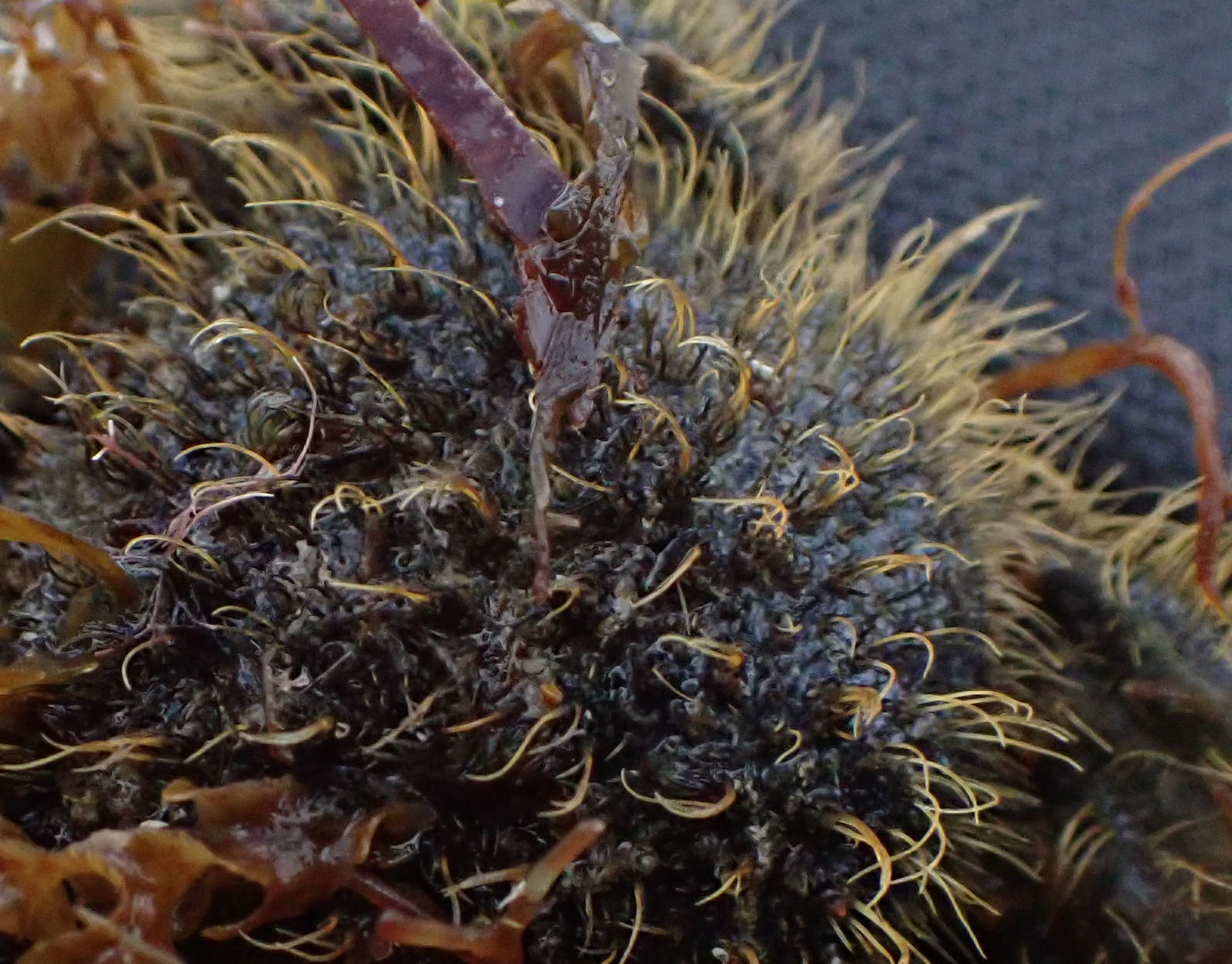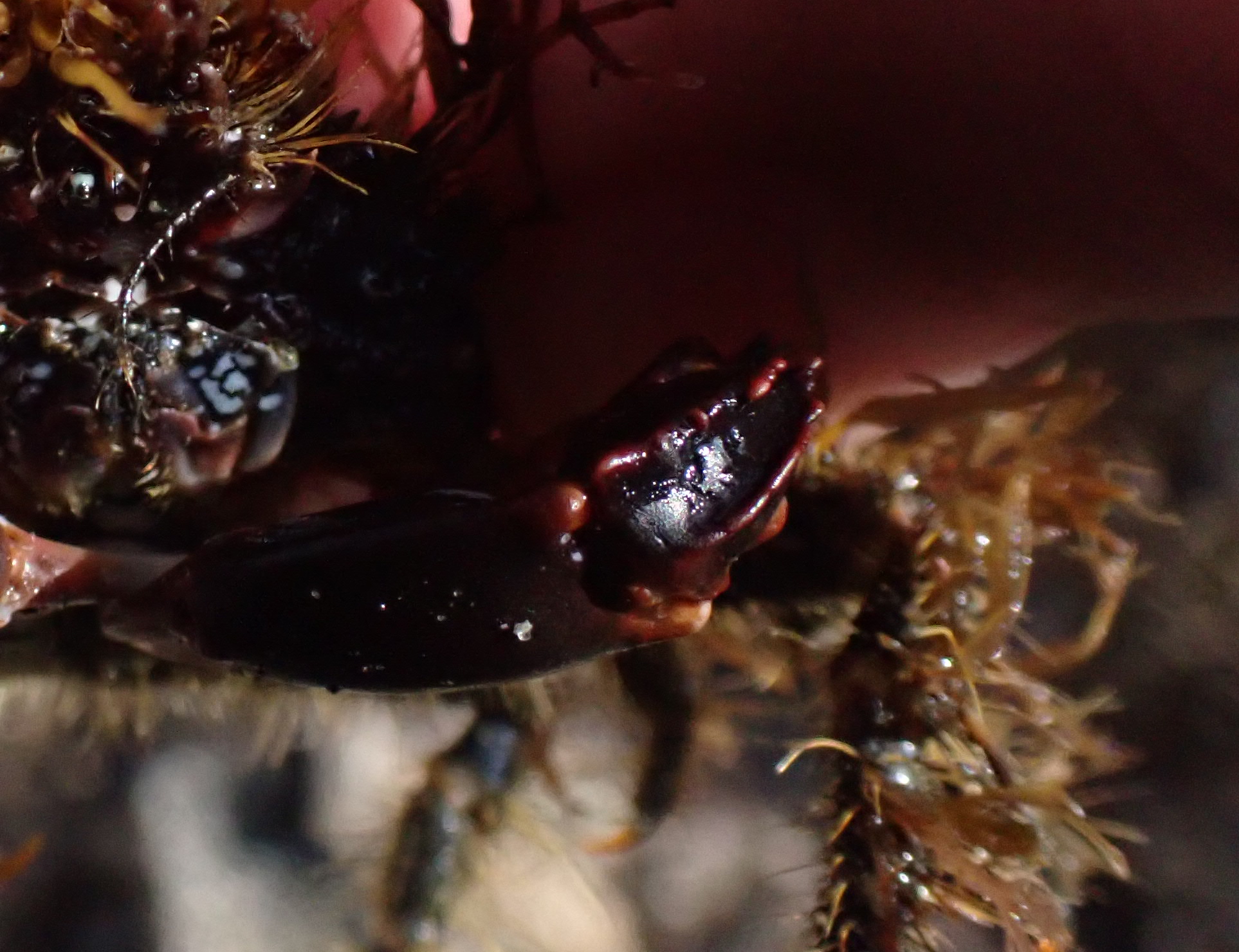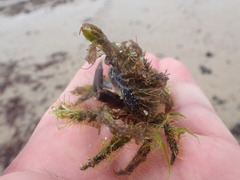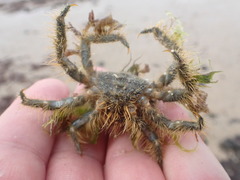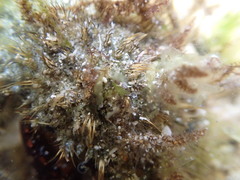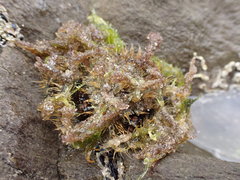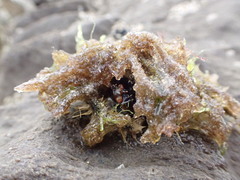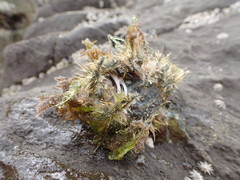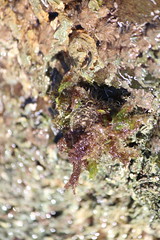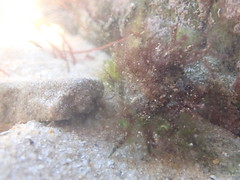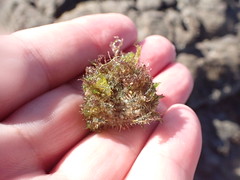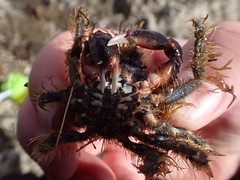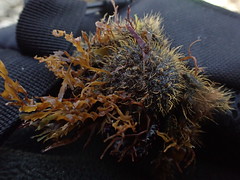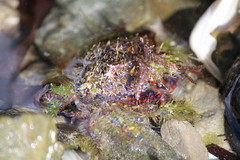A member of the spider crabs this species grows seaweeds and sponges over its body attaching them to the golden hairs that cover its carapace and legs. This camouflage makes them harder to spot amongst the other seaweeds. Normally where you find one there is another or a group of them. Look for a moving clump of seaweed although they do burry themselves partially making even harder to spot them.
The triangular pear-shaped body normally dark reds to browns in colour and the claws feature a lighter coloured ridge along them and are red to orange in colour with white tips. The front of the carapace features two rostral spines forming a V-shape with 9 other outward facing marginal spines around the carapace also no posterior spines.
Note: The features of the carapace in particular the spines and ridges above to eyes and around the edge of the carapace is the true and correct way to identify these crabs, however this can be difficult in live animals given the seaweeds and sponges that cover them the above indicates key differences easily visible without disturbing the crab too much.
What habitats does Notomithrax ursus live in?
Hiding from bright lights this crab can be found under rocks and amongst seaweeds in the low intertidal zone to shallow subtidal areas.
What is the distribution of Notomithrax ursus?
New Zealand and south-east Australia including Tasmania
How big does Notomithrax ursus grow?
Can grow to around 40mm in carapace length
Disclaimer: A lot of work goes into trying to identify and ensure accurate identifications are made and that the listed Descriptions, Sizes, Habitats and Distribution information is as accurate and valid as possible. Unfortunately, information in this arena is ever changing and as such no guarantee can be offered that it is correct or currently valid as a result the information is provided as a guide, and it is always suggested that you do a little research to ensure you have the latest and most accurate information. View the reference's or bibliography I welcome any feedback and comments on the information provided.


